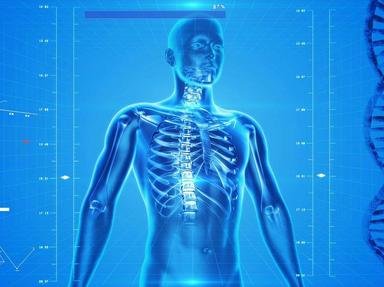Quiz Answer Key and Fun Facts
1. A cadaver is lying on the table in the morgue. The examiner walks in and begins to conduct his examination. By the time he has finished, he concludes that the person in question died due to strangulation. Which of these would explain why he thought that?
2. A first year medical student is desperately cramming for his next exam. His exam is on the joints of the body and he decides to test himself. Which of these bones would come under the classification of being part of a synarthrosis (fixed joint)?
3. The next day, the medical student looks over his exam paper. He sees a question that he is a little bit confused about. It reads, "There are 31 true vertebras and 2 false vertebras, making 33 in total. This is the accepted medical structure of the spinal column."
4. Further on in the paper, the student has entered the muscles and fasciae section. Thankfully he remembers his human biology classes in high school and so can answer the following question correctly. "What is the medical name for the muscle that is antagonistic with the tibialis anticulus?" What did he answer?
5. At this point, perspiration is dripping off the medical student, being put through one of the hardest things he's ever done. "Why do they do this to me?", he asks himself. He began to get a bit of a headache and consequently, put his head in his hands. He was surprised to feel an intense throbbing where his finger currently was on his forehead. What is the artery he was most likely touching?
6. The medical student felt like giving up. Why was he putting himself through this kind of mental turmoil? However, the next question of the paper was a fairly easy one. The medical student smiled and his brain sighed with relief. Insanity not required. The question read as follows: "Which cranial nerve is responsible for our sense of smell?"
7. I'm eating a delicious pain au chocolat that I've just bought in Paris and a liquid is in my mouth already digesting some sugars. It is of course saliva. But how does it get into the mouth? The largest of the 3 salivary glands has a large duct that transports the saliva into the mouth. What is the name of this duct?
8. The hepatic portal vein is one of the most unusual, unique and interesting blood vessels in the human body. Why is this?
9. Bones are formed of mostly inorganic material, 66.7% in fact. Which of these is the highest inorganic constituent of bone?
10. Which of these have valves present?
Source: Author
reece22345
This quiz was reviewed by FunTrivia editor
crisw before going online.
Any errors found in FunTrivia content are routinely corrected through our feedback system.

